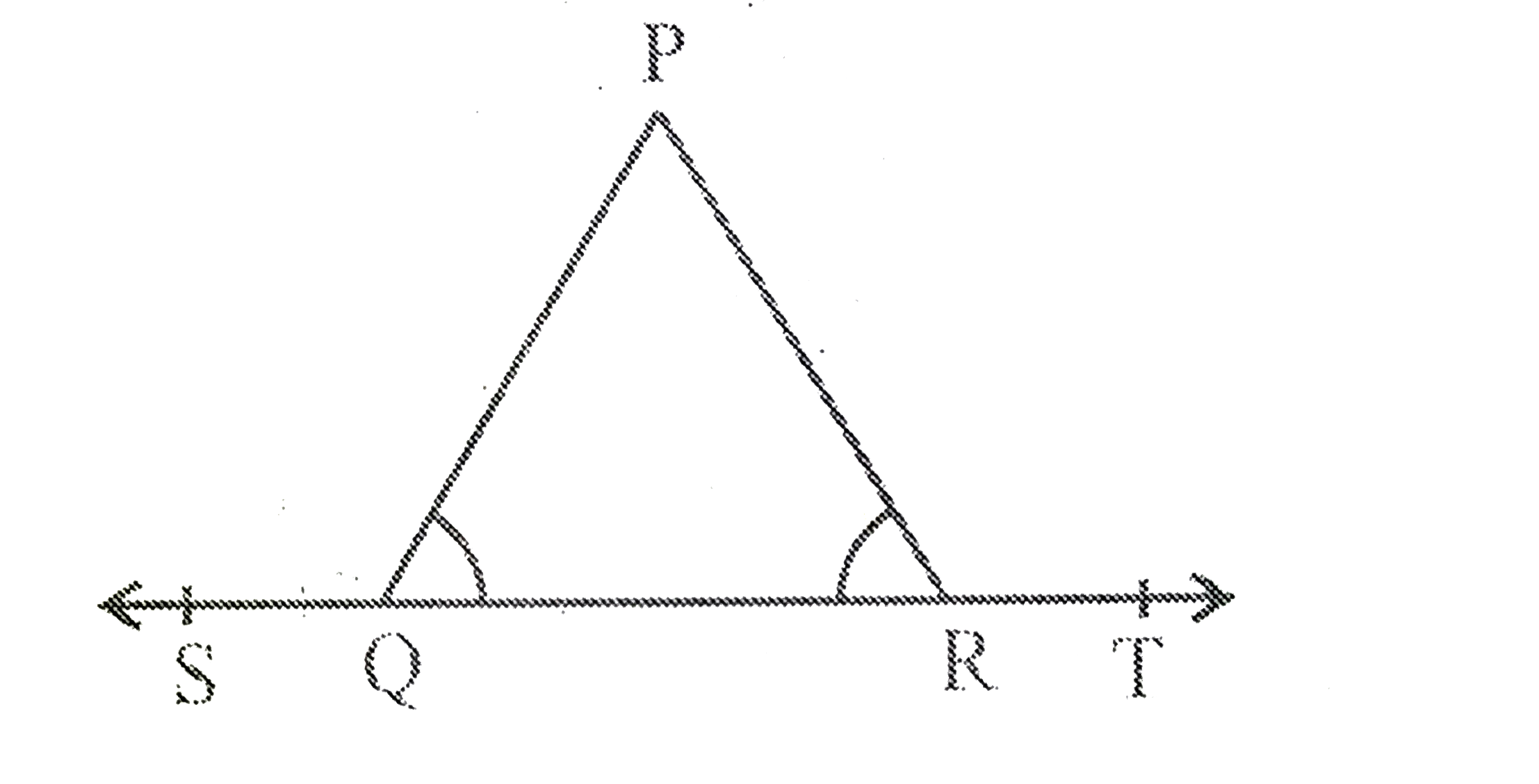In Fig.44, it is given that LM=MN, QM=MR, ML⊥PQ and MN⊥PR. Prove that PQ=PR.
To prove that PQ=PR given the conditions in the problem, we can follow these steps:
1. Identify the Given Information:
- LM=MN (Given)
- QM=MR (Given)
- ML⊥PQ (Given)
- MN⊥PR (Given)
2. Analyze the Triangles:
- Consider triangles △QLM and △RNM.
3. Establish Angle Relationships:
- Since ML⊥PQ, we have ∠QLM=90∘.
- Since MN⊥PR, we have ∠RNM=90∘.
- Therefore, ∠QLM=∠RNM=90∘.
4. Use the Given Equalities:
- From the given information, we know:
- LM=MN (1)
- QM=MR (2)
5. Apply the RHS Congruence Criterion:
- We have:
- LM=MN (1)
- QM=MR (2)
- ∠QLM=∠RNM=90∘
- Therefore, by the RHS (Right angle-Hypotenuse-Side) congruence criterion, we can conclude that:
△QLM≅△RNM
6. Conclude Corresponding Parts:
- Since the triangles are congruent, their corresponding parts are equal. Thus:
- LQ=NR (3)
- QM=RM (4)
7. Relate Angles to Sides:
- From the congruence of triangles, we can say that:
- ∠LQM=∠NRM
- Since ∠Q=∠R, we can use the property that sides opposite to equal angles are equal.
8. Final Conclusion:
- Therefore, the sides opposite to these equal angles give us:
PQ=PR
- Hence, we have proved that PQ=PR.
- LM=MN (Given)
- QM=MR (Given)
- ML⊥PQ (Given)
- MN⊥PR (Given)
- Consider triangles △QLM and △RNM.
- Since ML⊥PQ, we have ∠QLM=90∘.
- Since MN⊥PR, we have ∠RNM=90∘.
- Therefore, ∠QLM=∠RNM=90∘.
- From the given information, we know:
- LM=MN (1)
- QM=MR (2)
- We have:
- LM=MN (1)
- QM=MR (2)
- ∠QLM=∠RNM=90∘
- Therefore, by the RHS (Right angle-Hypotenuse-Side) congruence criterion, we can conclude that:
△QLM≅△RNM
- Since the triangles are congruent, their corresponding parts are equal. Thus:
- LQ=NR (3)
- QM=RM (4)
- From the congruence of triangles, we can say that:
- ∠LQM=∠NRM
- Since ∠Q=∠R, we can use the property that sides opposite to equal angles are equal.
- Therefore, the sides opposite to these equal angles give us:
PQ=PR
- Hence, we have proved that PQ=PR.
Topper's Solved these Questions
Similar Questions
In Figure, it is given that LM=MN, QM=MR, ML ⊥PQ and MN ⊥PR. Prove that PQ=PR
View SolutionIn Figure, PS=PR, ∠TPS= ∠QPR. Prove that PT=PQ
View SolutionIn PQR, QM⊥PR and PR2−PQ2=QR2 . Prove that QM2=PM×MR
View SolutionIn PQR, QM⊥PR and PR2−PQ2=QR2 . Prove that QM2=PM×MR
View SolutionIn PQR, QM⊥PR and PR2−PQ2=QR2 . Prove that QM2=PM×MR
View SolutionIn Figure, PQ=PR. Show that PS>PQ
View SolutionIn Fig. 6.15, ∠PQR=∠PRQ, then prove that ∠PQS=∠PRT.
 View Solution
View SolutionIn ΔPQR, if PQ=QR and L,M and N are the mid-points of the sides PQ,QR and RP respectively. Prove that LN=MN.
View SolutionIn Figure, ABCD is a parallelogram. O is any point on AC.PQ ||AB and LM||AD. Prove that ar(parallelogramDLOP)= ar (parallellogramBMOQ)
View SolutionIn A PQR, if PQ=QR and L, M and N are the mid-points of the sides PQ, PR and RP respectively. Prove that LN=MN
View Solution

